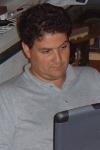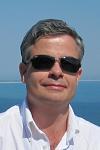| Summary |
This project was designed to bring together scientists involved with the development of marine robotics and geo-marine scientists traditionally involved in the research of recent tectonics, seismic reflection processing and sedimentary processes related to sea level variations and global climatic changes.
The collaboration between earth science and marine robotics scientists will enrich both groups by testing the autonomous surface and underwater vehicles developed by IST and, on the other hand, by providing the earth scientists with the insight towards newer technologies. It is hoped that this collaboration will contribute to make acquisition of marine data cheaper and less fastidious for earth scientists. The marine robotics scientists will be acquainted with the needs of earth scientist and also profit from testing their equipment in real conditions of data acquisition.
Since the group of geo-marine scientists already have substantial experience of data acquisition at sea in quite different geological settings, weather conditions and types of equipment, this collaboration will certainly be fruitful for both groups because the quality, logistics and cost of the acquired data can easily be judged. The geo-marine scientists will benefit from the fact that autonomous vehicles do not need a permanent scientific crew, can be equipped with different instrumentation and allow the study of geological objects at different distances, i.e. scales.
From the geological point of view this project will certainly be an important contribution to the knowledge of the effects of sea level variations on the sedimentary architecture of the Quaternary upper shelf. In the past most studies in the area of the Sado submarine delta and encompassing area concentrated only on dating short cores in estuarine sediments and interpretation of low resolution bathymetry. This project will acquire data that will allow a three dimensional geometrical model of the sedimentary sequences and thus an interpretation of the vertical oscillations of the sea level versus the sediment supply and also the importance of local and regional tectonics. The study area encompass the coast between Cabo da Roca (~38 degree46N) and Comporta (~38 degree20N), i.e. approximately 100km of a coastal segment that comprehends the cities of Lisbon and Setubal which have been strongly affected by earthquake destruction (Vilanova et al.2004). Borges et al. (2001) also showed instrumental epicentres located at the Sado estuary and calculated the stress field. The various high resolution types of surveys of this project will also test the possibility of finding surface earthquake rupture in this submarine area and thus contribute with new data for the seismic risk estimation of the Lisbon Setubal area, the most densely populated of Portugal. Dating of coastal uplifted and submerged deposits along this segment of the Portuguese coast will help to establish the existence or absence of recent tectonics in the study area.
|



